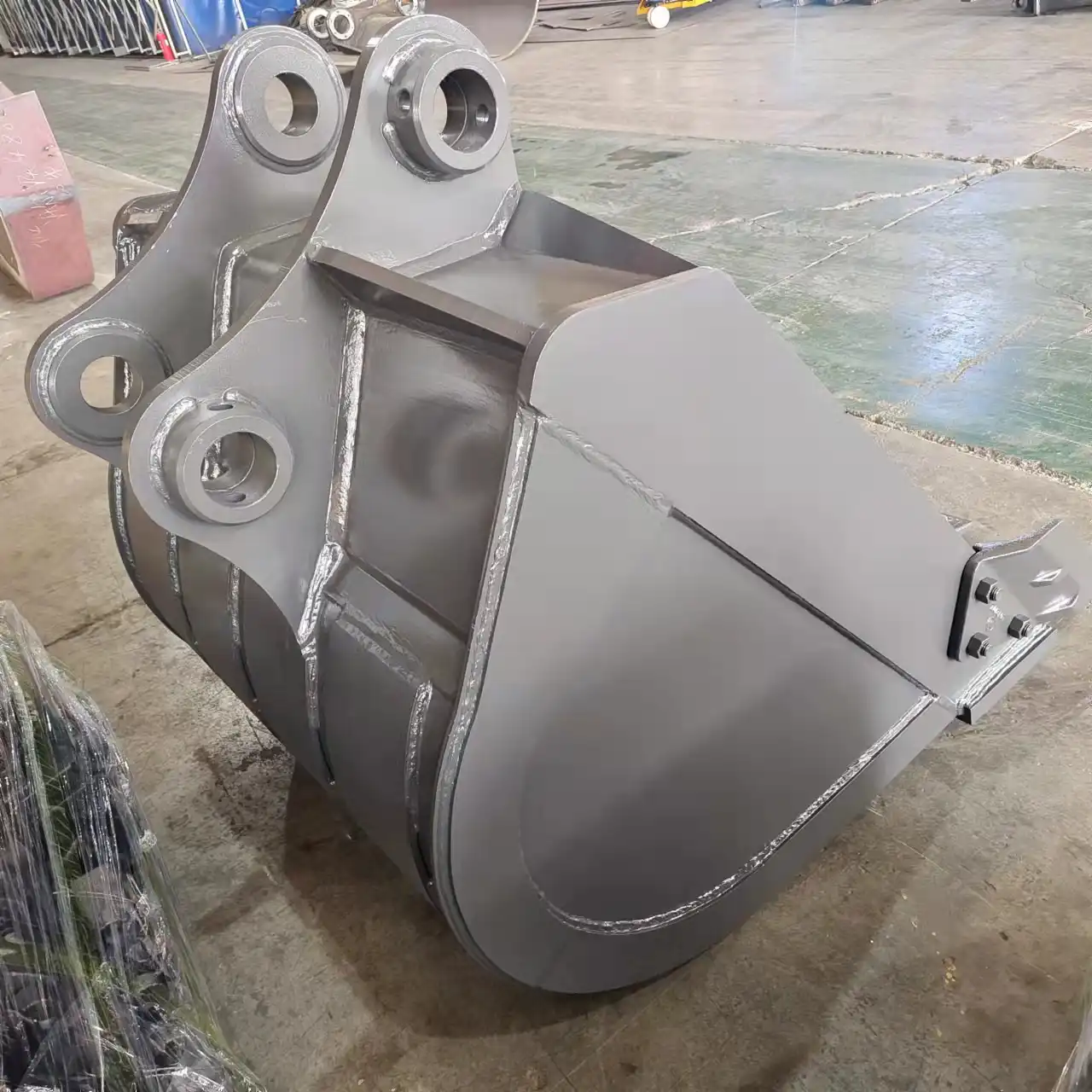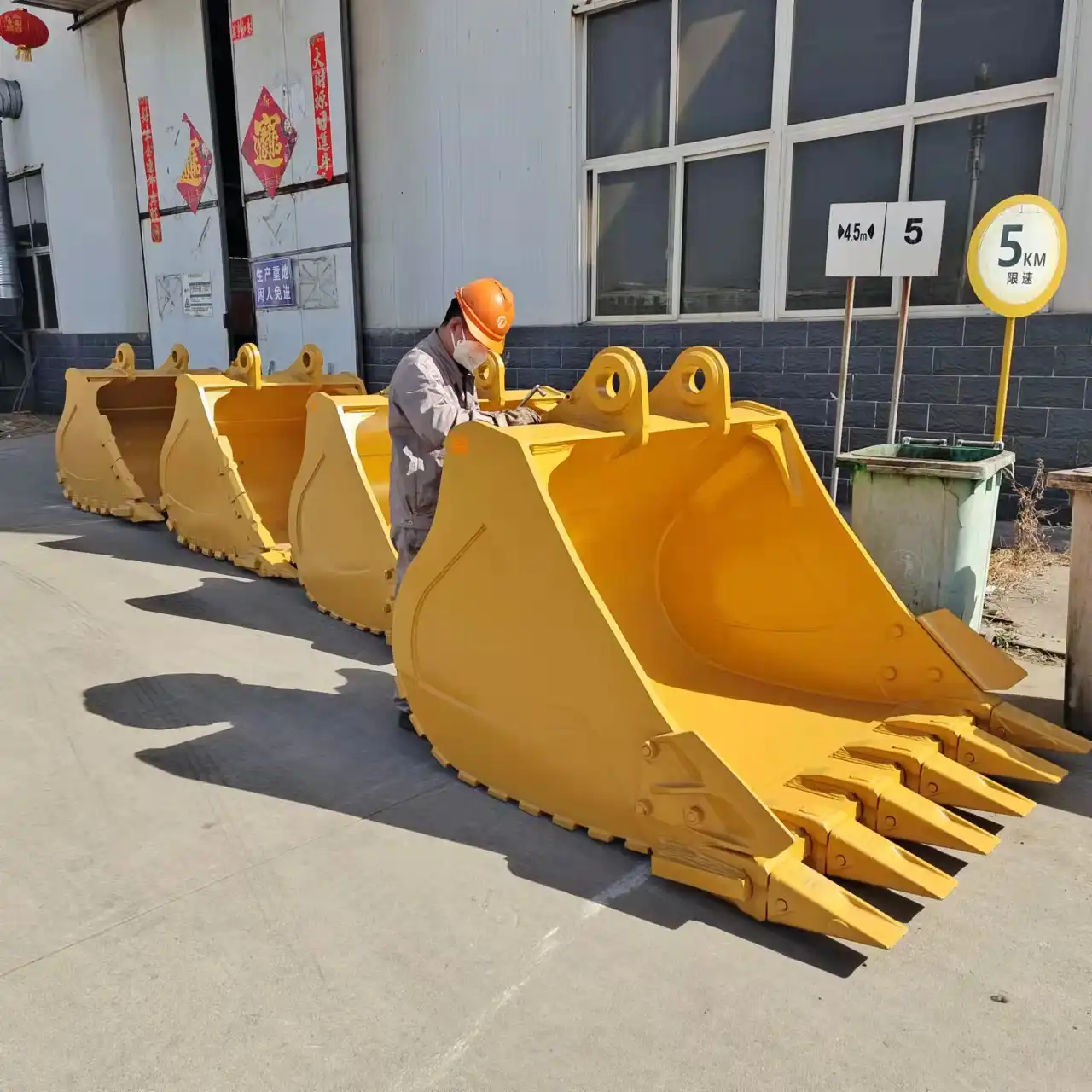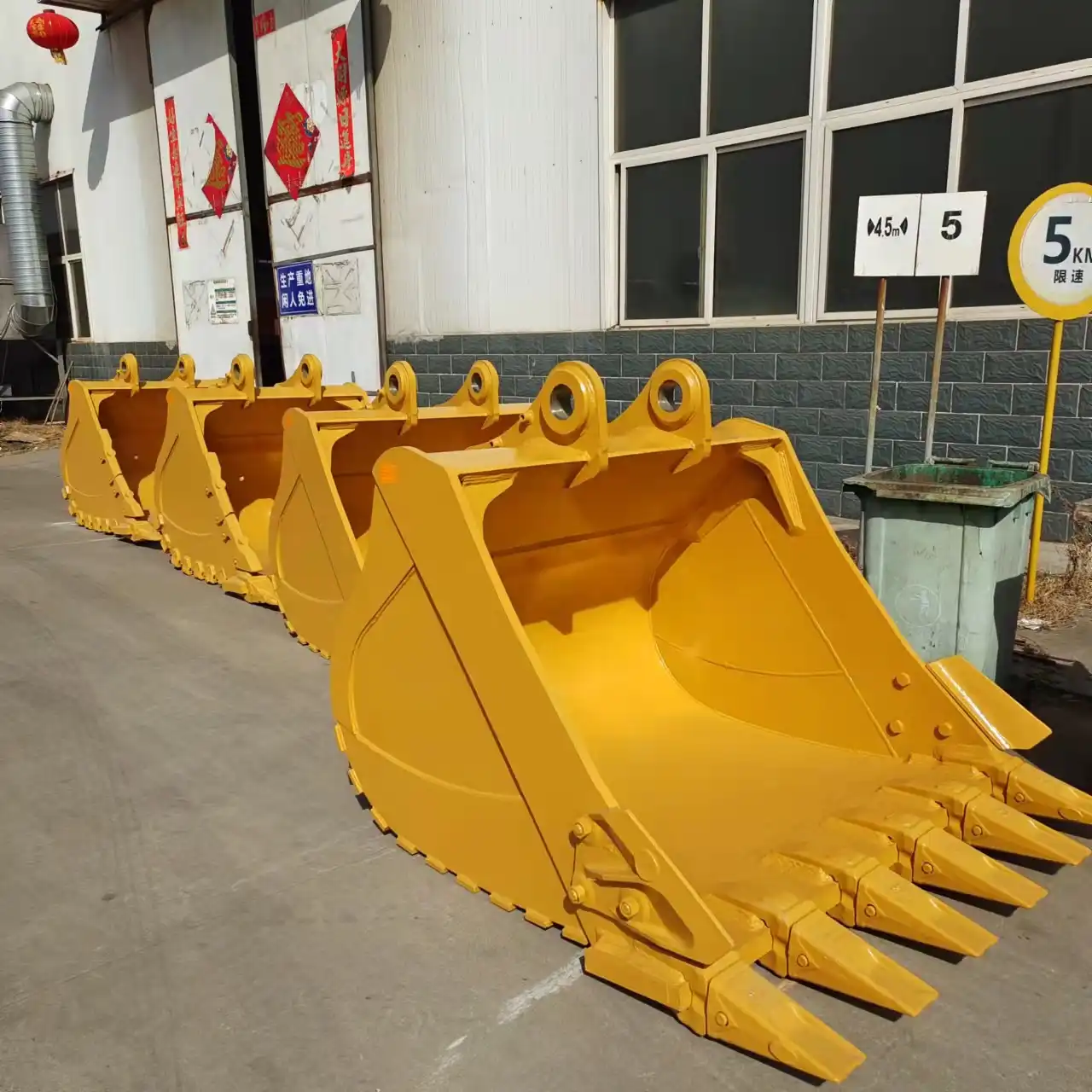What's the difference between a GP bucket and an HD bucket?
When selecting the right excavator bucket for your project, understanding the fundamental differences between General Purpose (GP) and Heavy Duty (HD) buckets is crucial for operational efficiency and equipment longevity. GP buckets are designed for everyday applications involving softer materials like soil, sand, and clay, featuring a lighter construction with moderate reinforcement. In contrast, HD buckets are engineered specifically for demanding environments where rock, concrete, and abrasive materials are encountered regularly. These robust attachments feature significantly thicker steel, additional wear plates, and reinforced cutting edges to withstand intense abrasion and impact forces. The structural differences directly impact not only durability but also fuel efficiency, as HD buckets typically weigh 15-30% more than their GP counterparts. Making the right choice requires careful assessment of your specific job requirements, material density, and operational frequency to balance performance needs with equipment capabilities.
Core Design and Construction

Structural Reinforcement Differences
The most noticeable distinction between GP and HD excavator bucket designs lies in their structural reinforcement. GP buckets typically feature moderate reinforcement with standard wear plates and side cutters suitable for everyday digging in soil, clay, and similar materials. They're constructed using steel that's typically 8-12mm thick, providing adequate strength for general applications while maintaining reasonable weight.
HD buckets, by comparison, are fortified warriors. They're built with substantially thicker steel (often 15-20mm), multiple internal stiffeners, and reinforced side plates to withstand extreme forces. The cutting edge on an HD bucket is significantly more substantial, usually 25-40% thicker than what you'd find on a GP model. This robust construction exists specifically to handle repeated impact with rocks, concrete, and other abrasive materials without premature failure.
Weight and Material Composition
The weight difference between these bucket types is substantial and directly impacts performance. GP buckets prioritize fuel efficiency and machine balance, weighing approximately 15-30% less than comparable HD models. This lighter design allows for quicker cycle times and reduces strain on the excavator's hydraulic system during regular operation.
HD buckets utilize higher-grade alloy steels with enhanced hardness ratings (often 400-500 Brinell) compared to the standard steel (typically 300-400 Brinell) found in GP buckets. This specialized metallurgy provides superior resistance to wear and deformation under extreme conditions but adds significant weight. The heavier construction of HD buckets requires more hydraulic power to operate, contributing to increased fuel consumption during operation.
Cutting Edge and Tooth System Variations
The tooth systems between the two bucket types reveal another layer of specialization. GP buckets often feature standard teeth with moderate penetration capabilities suitable for softer materials. These teeth are typically spaced wider apart and designed for optimal material flow when handling soil, sand, and clay.
HD buckets incorporate specialized tooth systems with heavier adapters and wear-resistant teeth designed specifically for rock penetration. The teeth are generally positioned closer together with specialized profiles for breaking through compacted or rocky material. Many HD buckets also feature additional protection systems like heel shrouds and side cutters that protect vulnerable areas from accelerated wear. The tooth replacement frequency for HD buckets in appropriate applications should be comparable to GP buckets in their intended environments—a properly matched bucket to the material reduces unnecessary wear regardless of type.
Material Handling Capabilities

Optimal Material Applications
GP excavator buckets excel in everyday applications involving loose to moderately compacted materials. They're the ideal choice for general earthmoving, trench digging in soil or clay, loading operations with sand or gravel, and landscape grading. Their design optimizes productivity when working with materials that don't require excessive breakout force. Construction projects involving topsoil removal, foundation excavation in softer ground, and utility trenching represent perfect applications for GP buckets.
HD buckets demonstrate their value in challenging environments where material hardness and abrasion are constant concerns. Quarry operations, demolition sites with concrete and rebar, rocky terrain excavation, and mining applications benefit significantly from their robust construction. HD buckets handle materials with high abrasion indexes that would quickly deteriorate standard components. When working with materials that require substantial breakout force or contain sharp fragments capable of puncturing standard buckets, HD models provide essential durability.
Load Capacity Considerations
The practical load capacity differences between bucket types directly impact productivity. GP buckets typically offer slightly larger volumetric capacity compared to similarly sized HD models due to their thinner wall construction. This enhanced capacity allows operators to move more material per cycle when working with lower-density substances like soil or sand. The design maximizes volume without compromising the excavator's lift capacity in standard applications.
HD buckets sacrifice some volumetric capacity for durability, with their thicker walls and reinforcement reducing internal volume. However, they're engineered to handle denser materials that would overload a GP bucket. When working with rock, concrete, or other high-density materials, HD buckets provide the structural integrity needed to safely handle these substantial loads without deformation or premature failure. The reduced capacity is a worthwhile trade-off when material density would otherwise exceed the safe working load of standard components.
Environmental Adaptability
Environmental factors significantly influence bucket selection. GP buckets perform optimally in controlled environments with moderate temperature variations and limited exposure to caustic substances. They're well-suited for environments where maintenance access is readily available and wear can be addressed through routine service.
HD buckets demonstrate superior adaptability to extreme conditions, including exposure to high ambient temperatures, corrosive substances, and environments where maintenance access may be limited. Their robust construction provides extended service intervals, making them particularly valuable in remote locations or projects with tight deadlines where downtime must be minimized. In marine applications or environments with high salt content, the thicker materials in HD buckets provide extended protection against accelerated corrosion compared to standard models.
Performance Trade-offs

Fuel Efficiency and Operating Costs
The weight differential between bucket types directly impacts fuel consumption. GP excavator buckets typically enhance fuel efficiency by reducing the load on the machine's hydraulic system. Operators can expect approximately 8-15% better fuel economy when using appropriately sized GP buckets compared to HD models in similar applications. This efficiency advantage translates to significant cost savings over extended operating periods, particularly in high-volume earthmoving operations.
HD buckets inevitably increase fuel consumption due to their substantially greater weight, requiring additional hydraulic pressure and engine power. However, this increased operating cost must be weighed against the alternative, premature bucket failure in demanding applications. When working with abrasive materials, the initial increased fuel costs are offset by reduced replacement frequency and decreased downtime. Properly matching bucket type to application ultimately delivers the best long-term economic outcome regardless of initial fuel considerations.
Productivity and Cycle Time Impact
Cycle time differences between bucket types can significantly influence overall productivity. GP buckets facilitate faster cycle times due to their lighter weight, allowing quicker boom movement and more efficient loading/unloading sequences. This speed advantage can increase hourly material movement by 10-20% compared to HD buckets when working with appropriate materials. The reduced resistance during penetration also contributes to smoother operation and less operator fatigue during extended work periods.
HD buckets necessarily sacrifice some speed for durability, with their increased weight extending cycle times. However, this reduction in speed is offset by their ability to maintain productivity in conditions where GP buckets would rapidly deteriorate or fail entirely. When working with hard, abrasive materials, the consistent performance of HD buckets ultimately delivers superior long-term productivity despite slower individual cycles. The reduced downtime for repairs or replacements often compensates for any cycle time disadvantages in appropriate applications.
Maintenance Requirements and Longevity
Maintenance patterns differ substantially between bucket types. GP buckets generally require more frequent inspection and maintenance when used in appropriate applications, with typical wear items needing attention every 500-800 operating hours. Their design allows for more straightforward wear plate and tooth replacement, often requiring less specialized equipment for routine maintenance.
HD buckets demand less frequent but more extensive maintenance interventions. Their robust construction extends service intervals to approximately 1,200-2,000 operating hours in appropriate applications, significantly reducing maintenance-related downtime. However, when servicing is required, the heavier components often necessitate additional equipment and potentially specialized repair procedures. The ultimate service life of an HD bucket typically exceeds that of a GP bucket by 40-60% when each is appropriately matched to its intended application—a crucial consideration when calculating total ownership costs.
FAQ
①When should I choose a GP bucket over an HD bucket?
Choose a GP bucket when working primarily with softer materials like soil, clay, sand, and light gravel in general construction or landscaping projects. GP buckets are ideal when fuel efficiency and faster cycle times are priorities, and when the excavation environment doesn't involve highly abrasive or dense materials.
②What makes HD buckets more expensive than GP buckets?
HD buckets command higher prices due to their thicker, higher-grade steel construction, additional reinforcement components, specialized wear-resistant materials, and more robust tooth systems. The manufacturing process is more complex, requiring additional welding, heat treatment, and quality control measures to ensure durability in extreme conditions.
③Can I use an HD bucket for all applications to maximize durability?
While technically possible, using an HD bucket for all applications is inefficient. The extra weight reduces fuel efficiency, slows cycle times, and places unnecessary strain on the excavator's hydraulic system when working with lighter materials. The optimal approach is matching bucket type to material requirements.
④How much longer will an HD bucket last compared to a GP bucket in rocky conditions?
In rocky, highly abrasive conditions, an HD bucket typically outlasts a GP bucket by 3-5 times. The substantial difference comes from the HD bucket's thicker wear plates, reinforced cutting edges, and higher-grade steel specifically designed to withstand impact and abrasion that would quickly deteriorate standard components.
Choosing between GP and HD excavator buckets ultimately comes down to matching the tool to your specific job requirements. At Tiannuo Machinery, we offer both bucket types with customization options to ensure you get the perfect attachment for your operations. For personalized recommendations based on your unique application needs, contact our team of specialists at raymiao@stnd-machinery.com.
References
Journal of Construction Engineering and Equipment, "Comparative Analysis of Excavator Bucket Types in Various Applications," Volume 28, Issue 4, 2023.
International Mining Technology Review, "Advances in Heavy-Duty Excavator Attachments for Extreme Environments," Annual Industry Report, 2024.
Construction Equipment Maintenance Handbook, "Optimizing Excavator Bucket Selection for Enhanced Productivity," 5th Edition, 2023.
Journal of Equipment Economics, "Total Cost of Ownership: General Purpose vs. Heavy Duty Excavator Attachments," Volume 15, Issue 2, 2024.
Heavy Equipment Engineering Digest, "Material Science Advancements in Excavation Equipment," Technical Review 37, 2023.
About Author: Arm
Arm is a leading expert in the field of specialized construction and railway maintenance equipment, working at Tiannuo Company.

